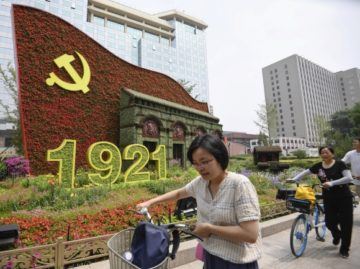George Magnus in Prospect:
 The Chinese Communist Party (CCP) will trumpet its own version of history as it celebrates its centenary on Thursday, and remind its citizens and the world of its centrality to China’s lofty economic and global aspirations in the decades ahead. It rules with a swagger about its accomplishments and a grand narrative about the future, and yet also with a repression and prickliness that are more consistent with a state of siege. China’s party leaders still fret about what happened to their Soviet counterparts and are determined to avoid a similar fate. China’s Leninist party has fared much better, but it nevertheless has good reason to be wary that the 2020s will be an important acid test.
The Chinese Communist Party (CCP) will trumpet its own version of history as it celebrates its centenary on Thursday, and remind its citizens and the world of its centrality to China’s lofty economic and global aspirations in the decades ahead. It rules with a swagger about its accomplishments and a grand narrative about the future, and yet also with a repression and prickliness that are more consistent with a state of siege. China’s party leaders still fret about what happened to their Soviet counterparts and are determined to avoid a similar fate. China’s Leninist party has fared much better, but it nevertheless has good reason to be wary that the 2020s will be an important acid test.
There are few direct parallels between modern China’s status as an economic behemoth and hub of the global economy and that of the Soviet Union, once facetiously referred to as “Upper Volta (as Burkina Faso was then known) with rockets.” Built on a centralised production and planning system and with heavy military and internal security resource demands, the Soviet Union never advanced beyond a backward consumer sector, in which durable goods were distributed mainly according to political status and privilege. Broadly defined to include some public consumption, Soviet consumption per head was never more than about 10-15 per cent of what it was in the United States, while income per head when Mikhail Gorbachev came to power was around $6,500, or about a quarter of the American level at the time.
Yet these numbers should also give us pause for thought.
More here.
